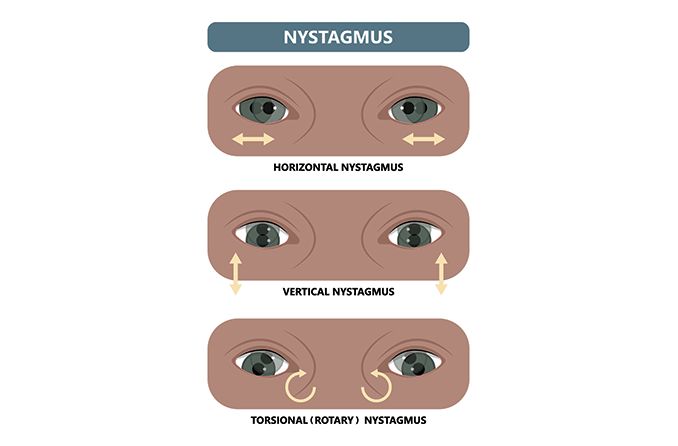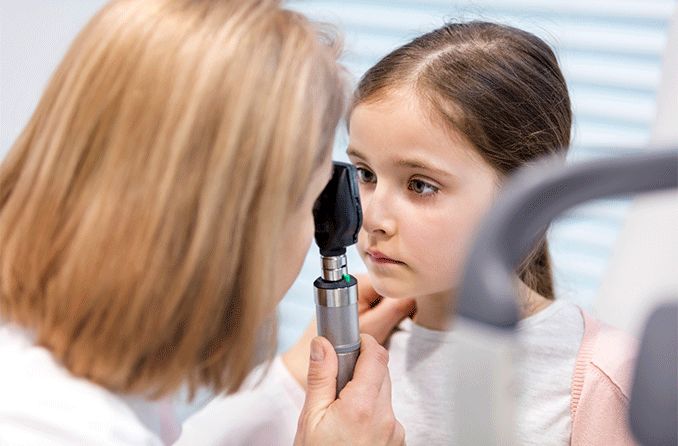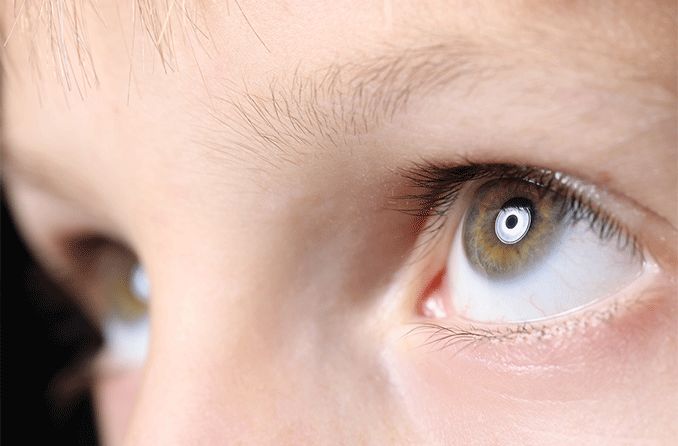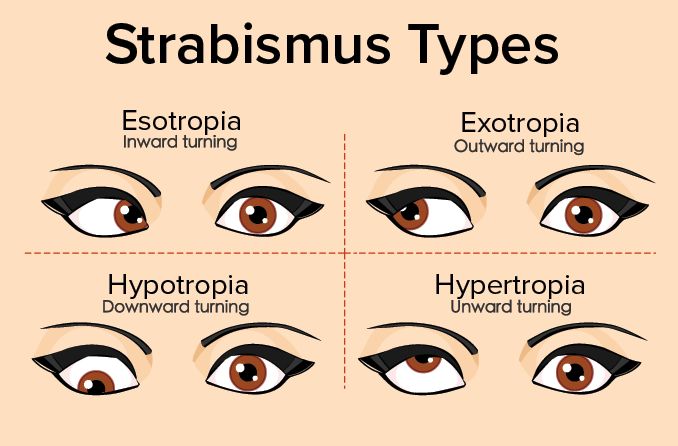There are many different types of nystagmus, each classifying a slightly different form of the disorder. Depending on the diagnosis, a patient’s nystagmus may be classified using more than one type.
Underlying cause
All nystagmus disorders fall under one of the following overarching types. Each depends on which body system is causing the disorder.
The two broad types of nystagmus that relate to the underlying cause are:
Optokinetic nystagmus, also known as pendular nystagmus, causes the eye(s) to rock back and forth like a pendulum. Pendular nystagmus is often caused by an eye or nervous system condition.
Vestibular nystagmus, also known as jerk nystagmus, causes a more abrupt “jerk” toward one side, followed by a slower return to the other side. For this reason, it can be classified as beating nystagmus, which will be expanded upon below. It usually relates to a problem in the vestibular system of the brain or inner ear, which the brain uses to interpret balance, motion and spatial surroundings.
Age at onset
Secondarily, nystagmus is grouped by the general cause and age of onset. These are classified under one of three types:
Congenital nystagmus, also known as infantile nystagmus, is a relatively rare condition seen in newborn babies sometime between birth and six months of age. Congenital nystagmus can have one of many underlying causes, some more serious than others. About one in every 5,000 babies is born with nystagmus, according to the National Institutes of Health.
Spasmus nutans occurs in children between the ages of six months and three years. It usually goes away without treatment between the ages of two and eight.
Acquired nystagmus can occur in people of any age. It is the most common form of nystagmus, occurring as the result of a disease, injury or separate neurological disorder.
SEE RELATED: What are the symptoms of nystagmus?
Direction of eye movement
There are three nystagmus types that classify which direction a nystagmus patient’s eyes move:
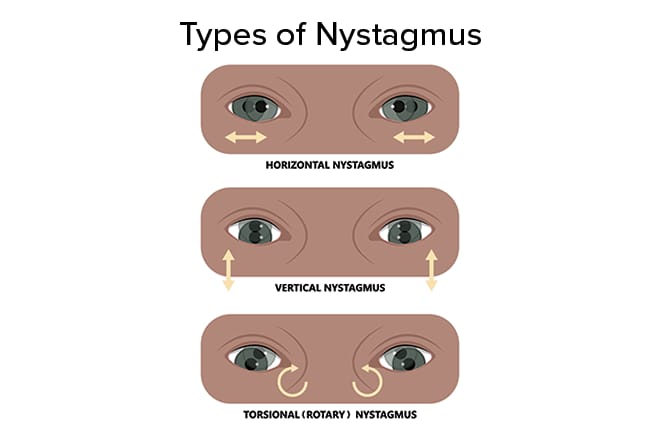
Horizontal nystagmus usually refers to a form of optokinetic nystagmus that causes the eyes to swing horizontally from left to right, or vice versa. Vestibular nystagmus can also cause horizontal movements, but those are more commonly referred to as left-beating nystagmus and right-beating nystagmus, depending on the direction of movement. Horizontal nystagmus should not be confused with the Horizontal Gaze Nystagmus Test (HGN), which is covered later.
Vertical nystagmus similarly refers to the form of optokinetic nystagmus that causes the eyes to move vertically from top to bottom, or vice versa. Vestibular nystagmus can also cause vertical movements, but these are more commonly referred to as upbeat nystagmus and downbeat nystagmus.
Rotary nystagmus, also known as torsional nystagmus, describes a condition where the eyes move in more of a circular fashion, as if they’re moving around an axis. It can be either optokinetic or vestibular.
SEE RELATED: How does an eye doctor test for nystagmus?
Effect of closing one eye
In certain cases, involuntary eye movements can be affected by closing or covering one eye. There are three types of nystagmus that further define this response:
Manifest nystagmus means uncontrollable eye movements are present all the time, regardless of either eye being covered.
Latent nystagmus only occurs when one eye is covered. It disappears when both eyes are uncovered.
Manifest-latent nystagmus means that movements are always occurring, but worsen in intensity when one eye is covered.
SEE RELATED: Other eye movement disorders
More specific subtypes
There are many more specific types and subtypes of nystagmus. Each provides additional insight into the cause, symptoms and potential treatment of the disorder.
A few of the common specific classifications of nystagmus include:
Gaze-evoked nystagmus (GEN) is characterized by involuntary eye movements that only occur when the eyes gaze away from their central position looking straight ahead. GEN can occur solely with horizontal or vertical gazes.
Convergence-retraction nystagmus is a condition that causes the eyes and eyelids to retract whenever someone attempts to look upward. It is commonly seen with a disease called Parinaud's syndrome.
Voluntary nystagmus is the term used when someone has the ability to temporarily induce nystagmus-like eye movements. It is not usually dangerous and rarely a cause for concern. A Journal of Neurology, Neurosurgery, and Psychiatry study found that about 8% of college-age students could voluntarily induce nystagmus.
The Horizontal Gaze Nystagmus Test (HGN) is a common form of sobriety testing used by police to look for alcohol-induced nystagmus. During the test, an officer will have someone move their eyes toward different sides. They will take notice of any involuntary eye movements, especially once the eyes are more than 45 degrees from center.
SEE RELATED: International Nystagmus Awareness Day



